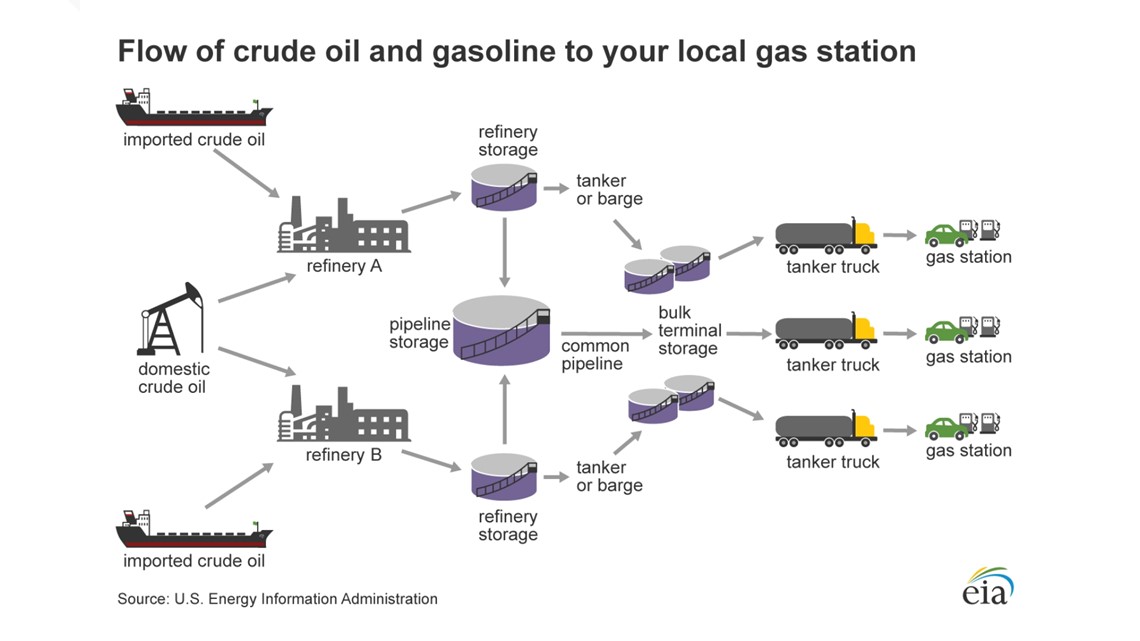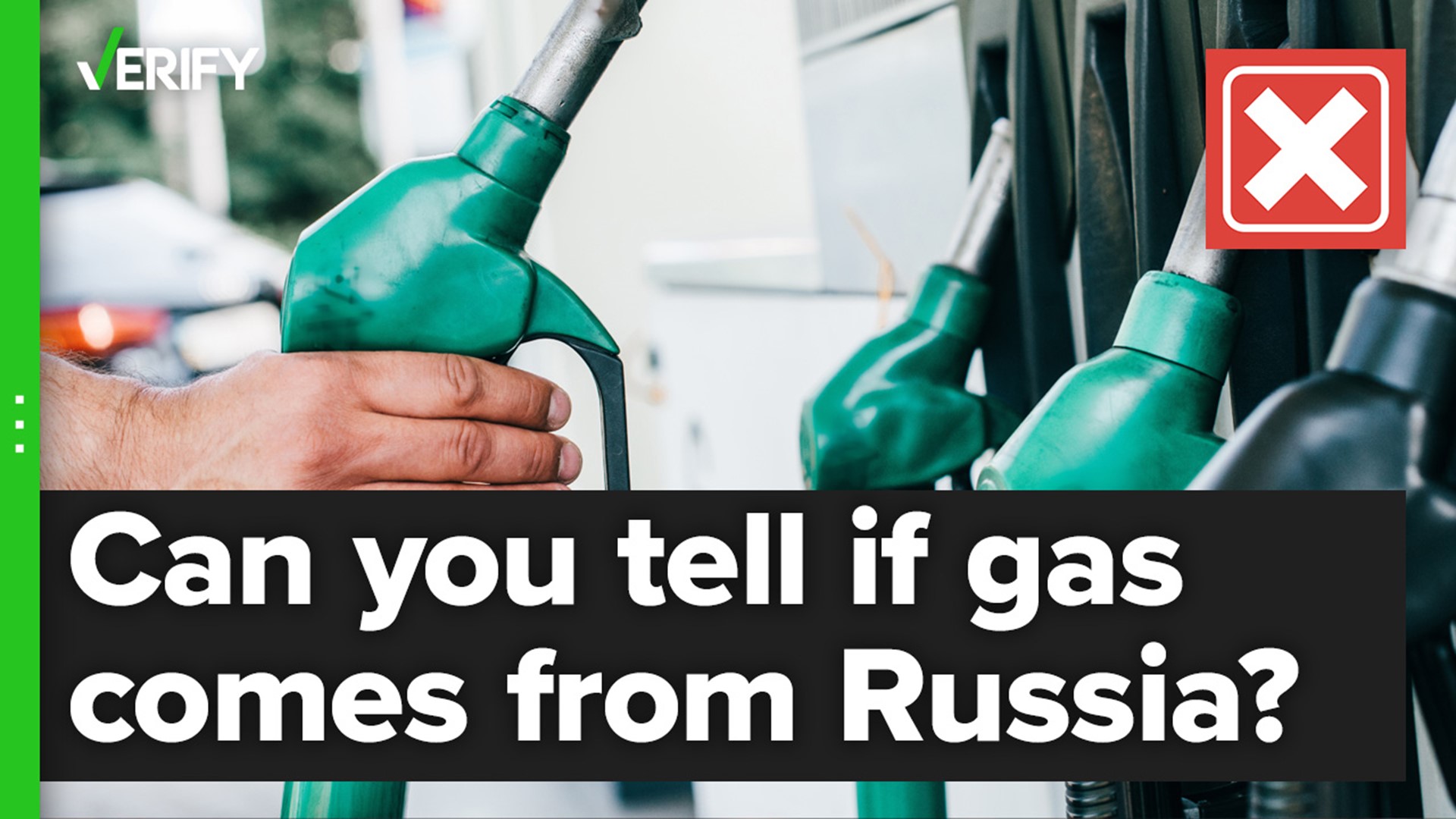UPDATE (03/08/2022): The United States is banning all imports of Russian oil, gas and energy, President Joe Biden announced in a speech at the White House on March 8.
"That means Russian oil will no longer be acceptable at U.S. ports and the American people will deal another powerful blow to Putin's war machine," Biden said.
Biden explained that the decision was made in close consultation with the U.S.'s allies and partners around the world, particularly in Europe.
"The United States produces far more oil domestically than all of the European countries combined. In fact, we're a net exporter of energy. We can take this step when others cannot. But we're working closely with Europe and our partners to develop a long-term strategy to reduce their dependence on Russian energy as well," Biden said.
-----------------------------------------------------
The original story remains as published below:
It’s been nearly a week since Russian President Vladimir Putin ordered troops into Ukraine on Feb. 24. Since then, major Western corporations have come under pressure to divest their stakes in Russian companies, the Associated Press reports. On Feb. 27, oil company BP said it would seek to dispose of its stake in Russian oil producer Rosneft. The next day, oil and gas company Shell said it would exit all its Russian energy investments. President Joe Biden is also facing pressure from lawmakers on both sides of the aisle to cut off U.S. imports of Russian oil and gas.
Several people online have been calling for boycotts of Russian-made products, including vodka and gasoline, in protest of the country’s invasion of Ukraine. Now, people on social media are asking whether certain gas stations in the U.S. use oil from Russia.
THE QUESTION
Can you tell if the gas at the pump comes from Russian oil?
THE SOURCES
- U.S. Department of Energy (DOE)
- U.S. Energy Information Administration (EIA)
- American Fuel & Petrochemical Manufacturers (AFPM)
- Patrick De Haan, Head of Petroleum Analysis, GasBuddy
THE ANSWER
No, you can’t tell if the gas at the pump comes from Russian oil.
WHAT WE FOUND
The U.S. Energy Information Administration (EIA) lists Russia as one of the top oil-producing countries in the world after the United States and Saudi Arabia. Data from the EIA and the American Fuel & Petrochemical Manufacturers (AFPM), show that Russian crude oil accounts for about three percent of U.S. crude oil imports and about one percent of total crude oil processed by U.S. refineries.
Petroleum refineries in the United States make gasoline and other petroleum products from crude oil and other liquids that are produced in the U.S. or imported from other countries, the EIA wrote on its website. EIA data from 2021 shows that the U.S. imported the most crude oil from Canada, followed by Saudi Arabia and Mexico, not Russia.
The EIA explained that it cannot identify the specific origin of gasoline sold at gas stations because most gasoline moves from refineries through pipelines to large storage terminals before it gets to your local gas station. During this process, the gasoline is sent through shared pipelines in batches, and the EIA says these batches are not physically separated “and some mixing, or commingling, of products occurs.”


Meanwhile, the EIA also explained that the gasoline a company sells at its branded fueling station is not necessarily produced by that company.
“Gasoline is sold at more than 100,000 retail outlets across the nation, and many are unbranded dealers that may sell gasoline produced by different companies. Branded stations may not necessarily sell gasoline produced by the companies that own the stations,” the EIA wrote. “The only difference between gasoline at one company's fueling stations and gasoline sold by another company is the small amount of additives that some companies blend into the gasoline after it leaves the pipeline and before it gets to their fueling stations.”
Even if the EIA could nail down the exact location of where the gas that we use to fuel our vehicles comes from, the source of crude oil — and other ingredients used at refineries — comes from domestic and international resources.
“Most refiners use a mix of crude oils from various domestic and foreign sources. The mix of crude oils can change based on the relative cost and availability of crude oil from those sources,” the EIA said.
Patrick De Haan, who serves as the head of petroleum analysis at GasBuddy, agrees with the EIA. In an email to VERIFY, De Haan also explained that it is “nearly impossible” to know exactly where the gas at the pump originated from.
“Because of all the various changes in process — and refineries can purchase/mix oils together of similar quality/API gravity. So, it's just impossible to know,” De Haan said.
More from VERIFY: No, Smirnoff and Stoli vodka are not made in Russia
